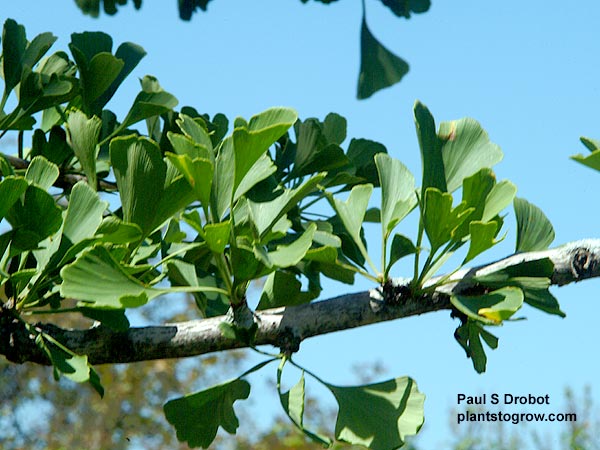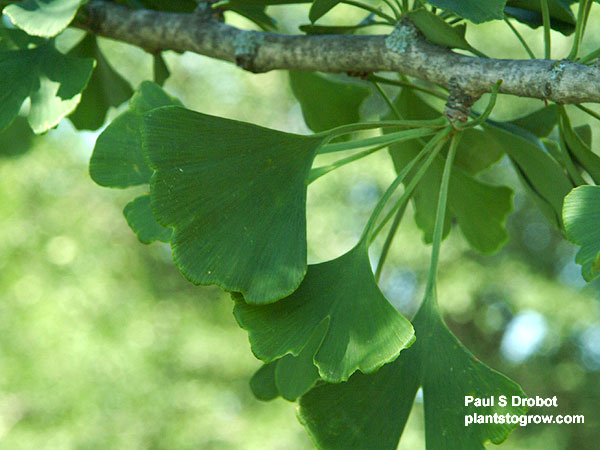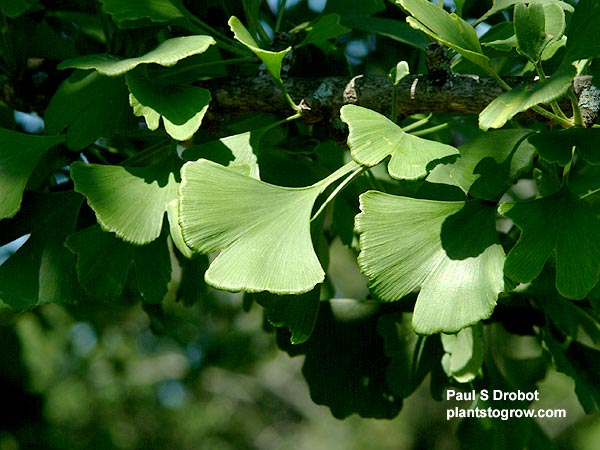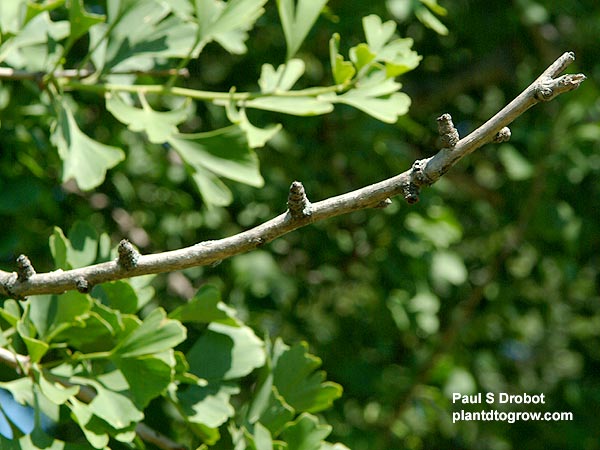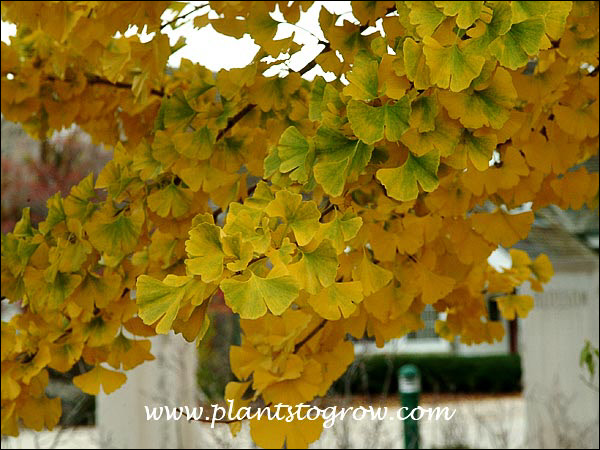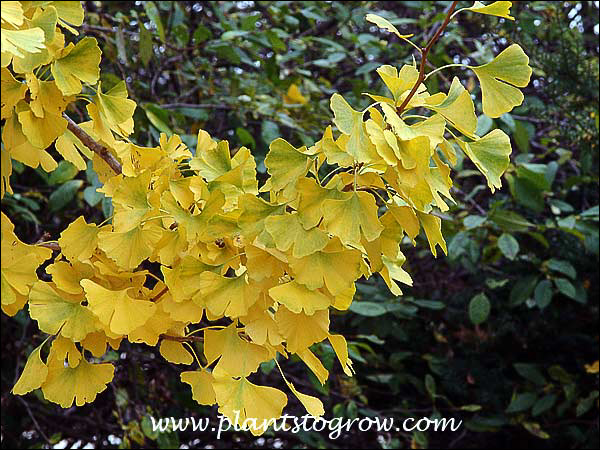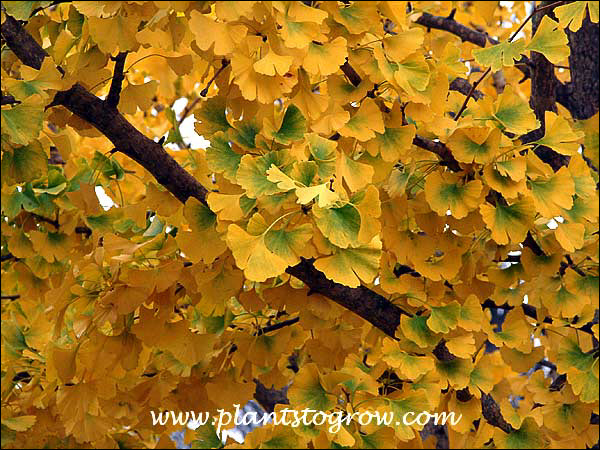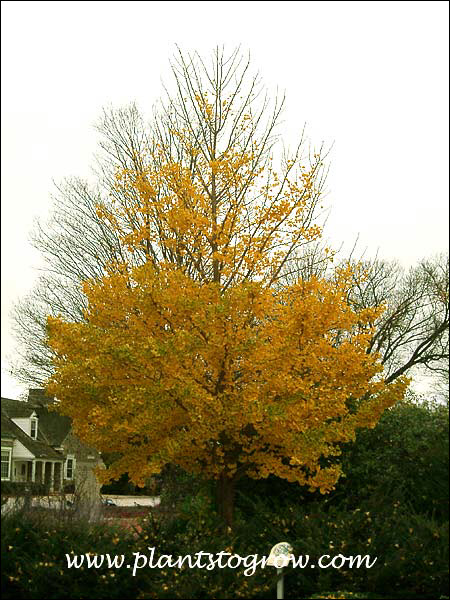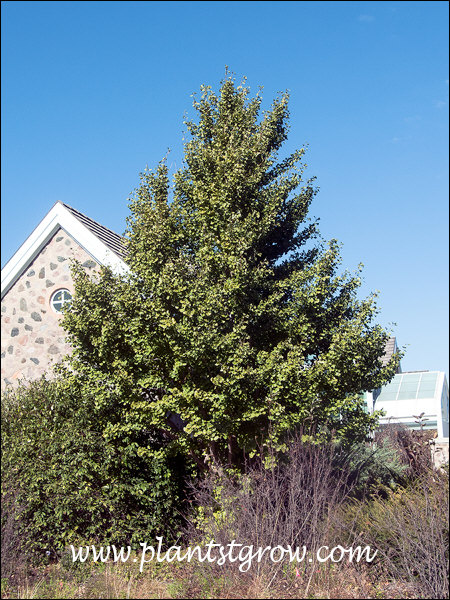| Description | A slow growing extremely hardy tree with great fall color. Has been called a "living fossil". |
|---|---|
| Pronunciation | (GINGK-go)(bi-LO-baa) |
| Plant Type | All Plants, Trees Deciduous |
| Hardiness Zone | 4-8 |
| Sunlight | full |
| Moisture | average |
| Soil & Site | prefers sandy, moderately moist, adaptable to most sites |
| Flowers | Trees are dioecious (male and female trees). Trees can be bought sexed and the male is preferred to avoid the stinky mess. Ginkgo’s are true gymnosperms. |
| Fruit | The fruit is produced on male trees and it is messy and malodorous. Starts producing seeds at about 20 years. The seeds are popular in some oriental cuisine and used as a medicine. |
| Leaves | simple, alternate, leathery, found in clusters on spurs, fan shaped, dichotomously veined, incised at the broad fan tip and dark green, brilliant yellow in the fall |
| Dimensions | Slowly reaches 50-80 feet in height with a spread of 30-40 feet. Dimensions vary among the plants and cultivars. |
| Propagation | seeds, cuttings |
| Native Site | Native to eastern China. |
| Cultivar Origin | Introduced in 1784 to America. |
| Misc Facts | The Ginkgo is the loan remaining species in an ancient group of plants, thriving during the time of the dinosaurs. If mother nature had her way the Ginkgo would be just about extinct. They where planted in Kaifeng, the capitol city of the Sung dynasty and under cultivation Ginkgo avoided the natural process of evolution. A few wild plants existed as late as 1933 in China. |
| Notes & Reference | #01-Manual of Woody Landscape Plants (Michael Dirr), #75-Encyclopedia of Nuts, Berries and Seeds (John Heinerman) |

Cart
